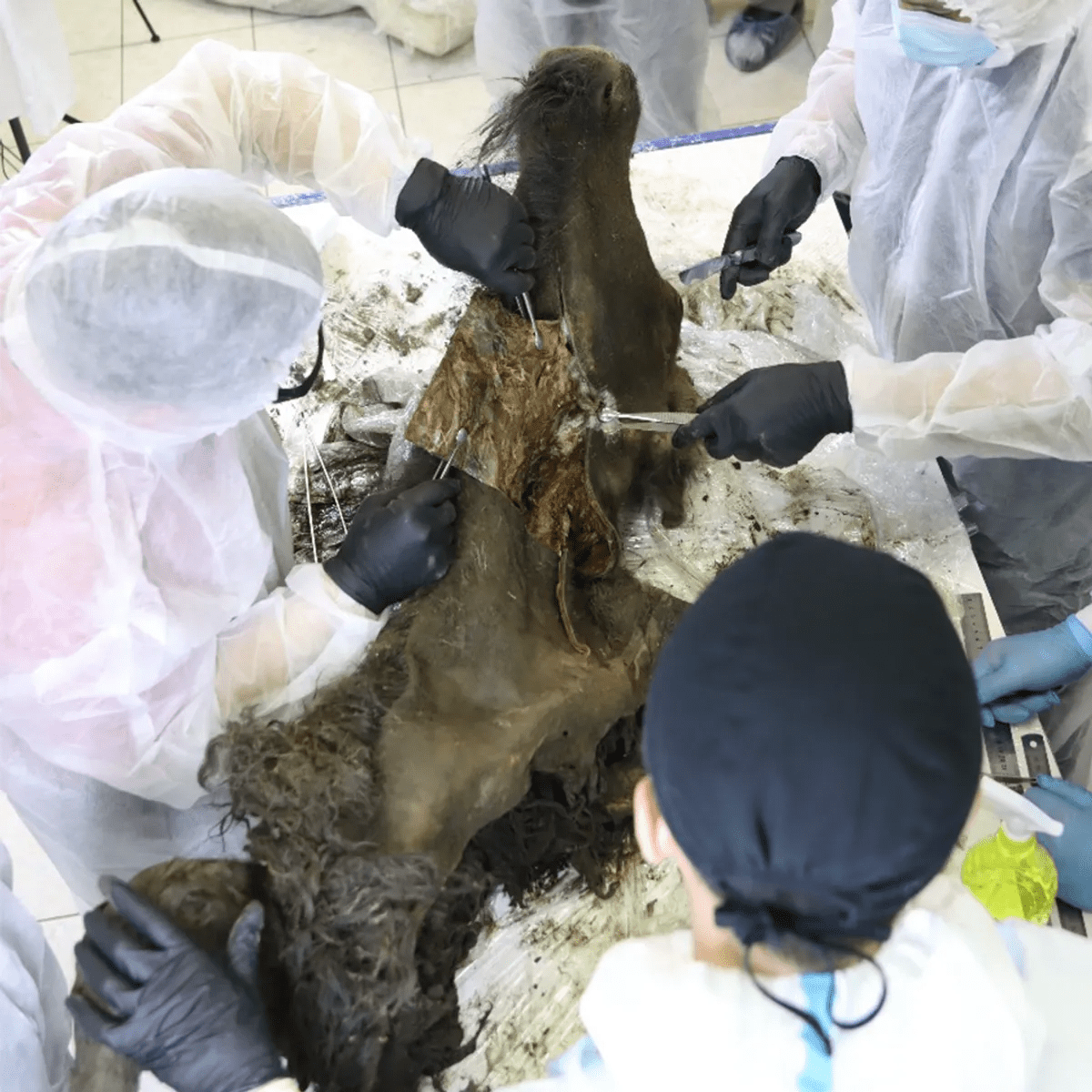Discovering a preserved specimen of any species in the permafrost is always exciting, but now researchers want to take their findings to a new level. A team in Russia has recently performed a necropsy on a bison thought to date back 8,000 years, and now they are hoping to clone the specimen.
The bison was discovered in the summer of 2022, in the Khaastaakh area in the Verkhoyansk region of Russia, after which the specimen was donated to the Mammoth Museum Laboratory of North-Eastern Federal University (NEFU) in Yakutsk. The specimen is incomplete – but the head, forelimbs, and part of the chest have been preserved remarkably well.
Thought to be around a year and a half to two years old, the bison specimen underwent a necropsy where samples of muscles, skin, and soft tissues were taken and the brain was removed.
While it is difficult to ascertain the age of the bison, previous bison discovered in 2009 and 2010 have been dated to around 8-9 thousand years ago. It is thought that the results of the sample tests which involve radiocarbon studies and microbiological investigations will shed light on the ecology of the bison’s habitat and provide information about its geological age.
Researchers performing an necropsy on a bison. Image Credit: Svetlana PAVLOVA / NEFU Press Service
“Preliminarily, this is a young individual 1.5-2 years old. When she died has not yet been established. The geological age of the bison discovered in 2009 and 2010 was 8-9 thousand years, the biological age is about 2 months and 4-4.5 years, respectively,” said Maxim Cheprasov, head of the NEFU Mammoth Museum in a statement.
The brain of the bison was removed for testing. Image Credit: Svetlana PAVLOVA / NEFU Press Service
Given that the tissues have been so well preserved in the permafrost, some of the team think it could be possible to use the DNA to clone the specimen.
“We are working with a unique find that could be cloned in the future thanks to selected materials. This becomes possible thanks to the joint work with a strong team of leading scientists of the North-Eastern Federal University,” said NEFU Professor, Director of the UAE Biotechnology Research Foundation Hwang Woo Sok.
It is worth noting that Hwang Woo Sok lost his position at Seoul National University in South Korea after his results were found to be fraudulent and nearly served time in prison for breaking medical ethics regulations around the collection of human egg cells. The team has also been involved in some controversy after it was revealed that a bear also found in the permafrost that was thought to date back 22,000 years was in fact only 3,500 years old.
Cloning any animal is always a complicated process, and attempting to do so on an animal that has been buried under the ice for potentially thousands of years makes the entire enterprise a lot more difficult.
“To make cloning possible, one needs to find intact chromosomes, but what we see even in the best specimens is that each chromosome is fragmented into millions of pieces,” paleogeneticist Love Dalén, who is not involved in the study, said in a statement in Live Science. “In my view, it is more likely that you can flip a coin and get heads a thousand times in a row than it is to find an intact chromosome from a specimen that is thousands of years old.”
In 2022, scientists cloned mice successfully from freeze-dried cells, but these cells can only be frozen for nine months, not a potential nine thousand years.
Source Link: Ancient Bison Found In Permafrost Is So Well Preserved Scientists Want To Clone It
